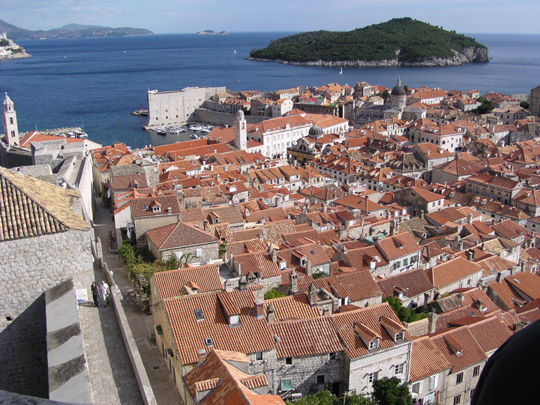Excursions around Dubrovnik

Balkan Holidays offer fantastic package holidays to Dubrovnik and its region. We have already written about the landmarks of Dubrovnik and the possible daytrips from Dubrovnik, now let’s have a look at some other points of interest in the area worth a visit.
Demolished during the Yugoslav war, the Dubrovnik Cable Car reopened in 2010 after a thorough refurbishment, taking you to the peak of Mount Srd. The 778 metre journey takes about five minutes and brings you to the top of the hill, 405 metres above sea level, with breathtaking views over the famous Old Town of Dubrovnik and the sea. The upper station has two panoramic terraces equipped with binocular telescopes, a snack bar, a panoramic restaurant, a souvenir shop and more. The cable car operates until 9pm every day.
Believe it or not, there is a 200m long cave just beneath the runway of Dubrovnik Airport. Minutes after your plane has landed, you can visit this adventure where Mother Nature has been working her magic for centuries. First opened to the public in the same year as the Cable Car, the cave is open between 10am and 6pm, staffed with English-speaking guides who will take you through this fast growing attraction. The constant temperature of 16C provides an ideal hideaway from the summer heat for tourists and lovers of fine wine. During your visit you have the opportunity to taste the famous protected local wines from the Konavle region.
If you want to take a beautiful snapshot of Dubrovnik and the islands nearby from above, head to the Sivi soko viewpoint, named after a bird, the Peregrine Falcon. This spot, just off a mountain road above Dubrovnik, has breathtaking views of Dubrovnik, Konavle, Cavtat and the neighbouring islands. Follow the old road towards Dubrovnik Airport and exit at the town called Zvekovica, then follow the route we have saved for you on Google Maps, just click here for directions.
A lazaret is a building used as a quarantine station for sailors and maritime travellers in times of plague. As Dubrovnik was a key hub in the trade between the Ottoman Empire and the West in the period between the 14th and 16th centuries, its lazaret was built in 1627 to prevent plagues from entering the city through its port. Since such buildings were usually destroyed when they were no longer needed, Dubrovnik’s lazaret is one of the last few remaining examples in Europe, its survival with a large portion of original materials, details, shape and structure is unusual. The impressive and recently restored stone buildings now house artists’ workshops (called Art Workshop Lazareti) and a humanitarian organisation, and serve as the venue for concerts and DJ parties.
